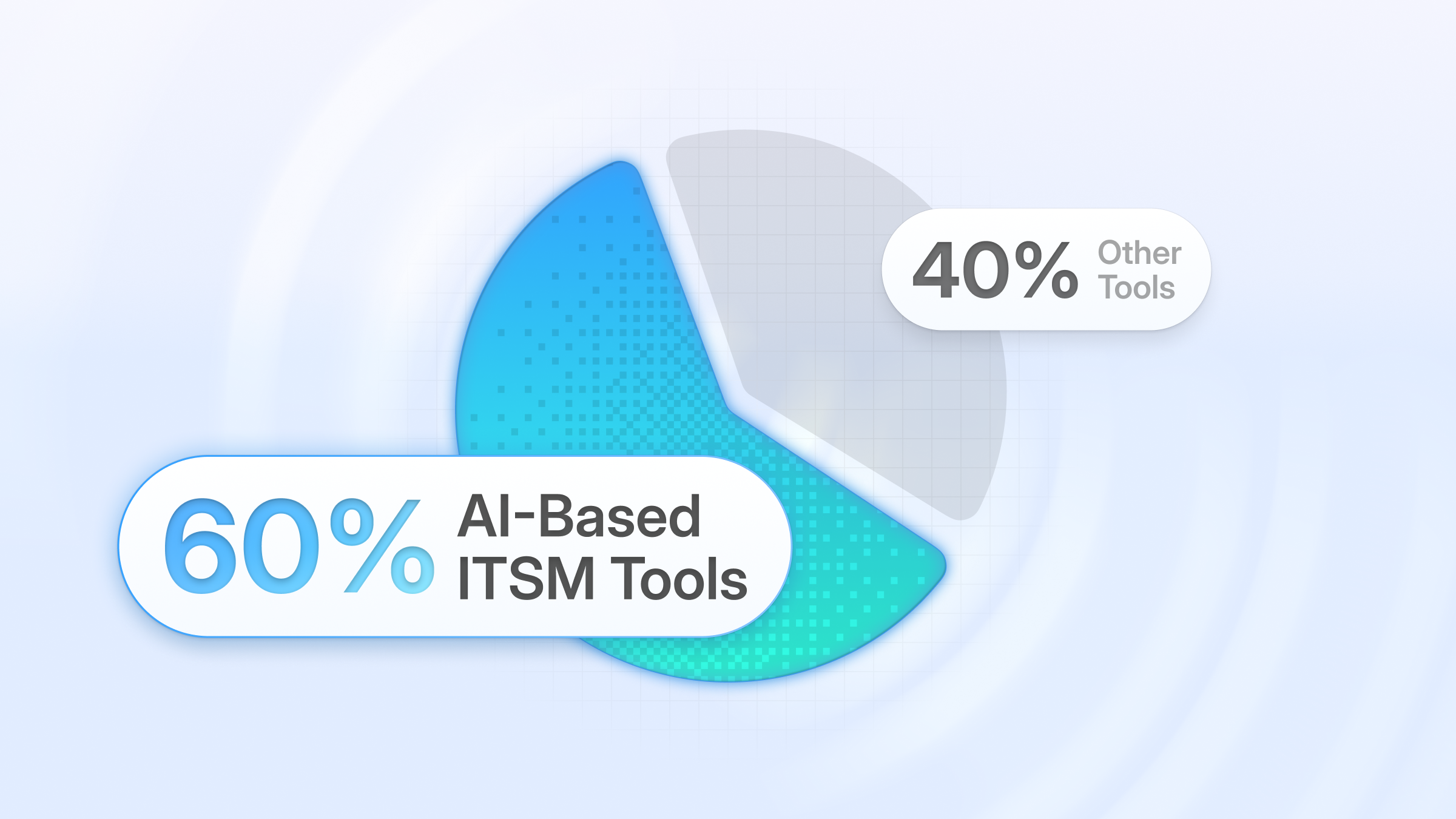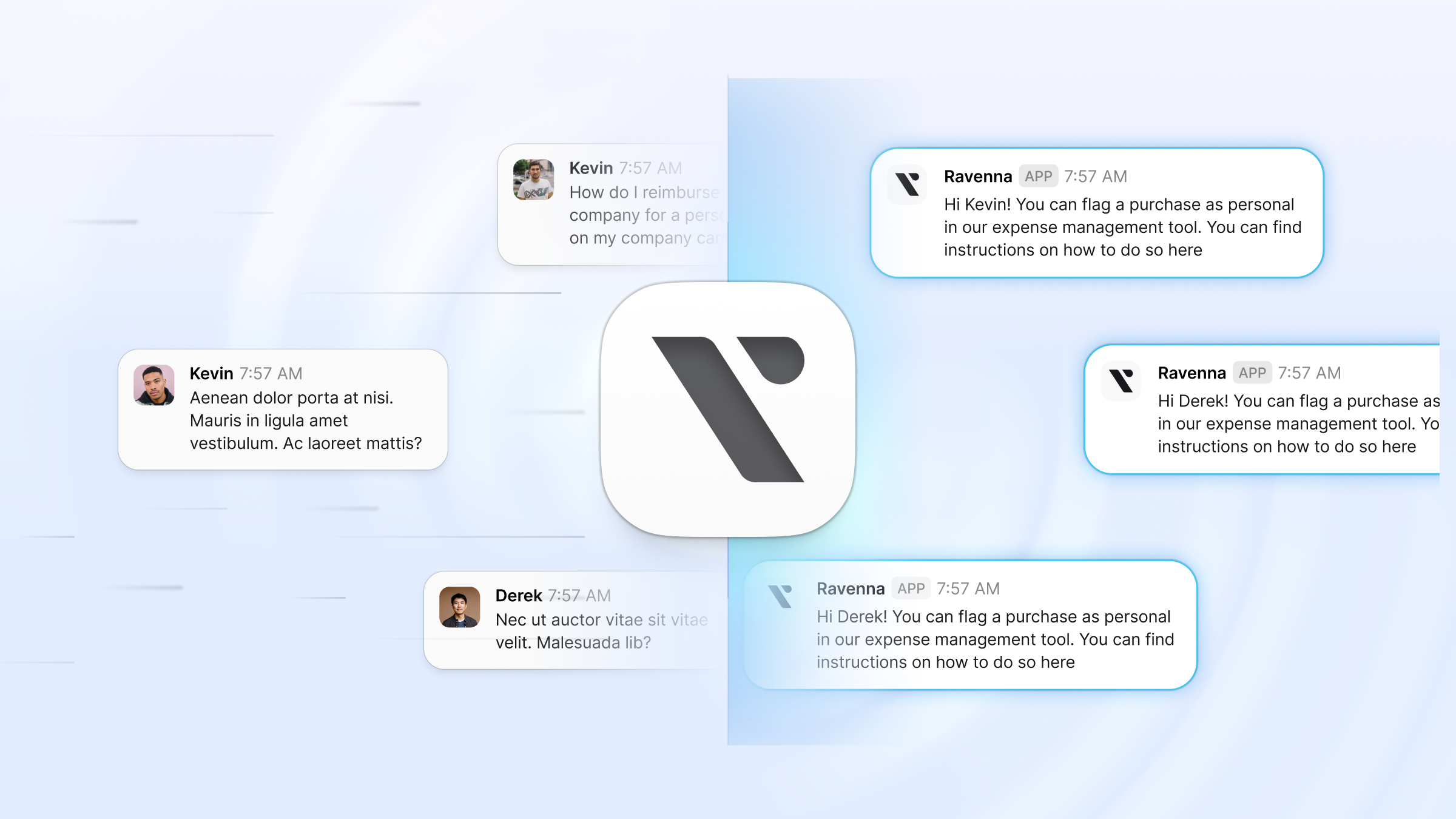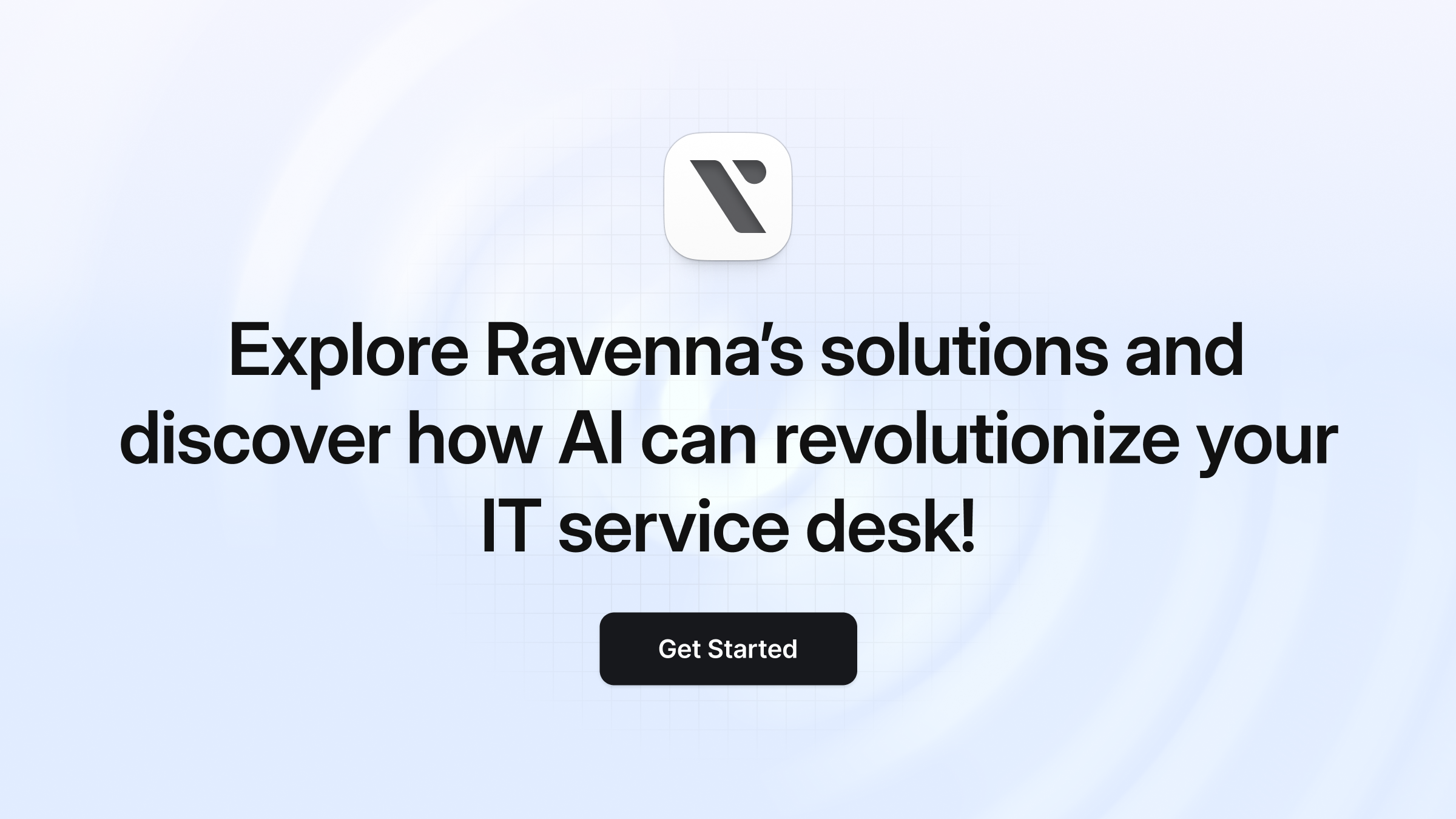The Role of AI in Improving IT Service Management
AI is reinventing IT Service Management (ITSM) by automating processes, predicting issues, and improving user interactions. Discover how these innovations reshape IT operations and enhance support efficiency with tools like Ravenna.

Approximately 60% of companies use AI-based IT Service Management (ITSM) tools to enhance their service desk functions - and yes, it does wonders.

In today’s fast-paced business environment, IT service desks grapple with escalating service requests, rising complexity, and the need for enhanced user experiences. AI for ITSM is a transformative technology redefining how IT teams manage and deliver services. With AI, it’s like your IT desk suddenly developed superpowers (minus the cape—unless your team insists). This blog explores the challenges faced by IT service desks, how AI in IT Service Management (AI in ITSM) is the game-changer, and showcases real-world success stories, including a compelling case study from ERM on AI ITSM implementation.
Challenges Plaguing IT Service Desks
- Overwhelming Request Volumes
With technology integrated into every aspect of business, IT service desks face a constant influx of service requests, often leading to backlogs and delays. - Protracted Resolution Cycles
Traditional ITSM processes can result in unresolved incidents, prolonged service outages, and productivity losses. - Repetitive Tasks
Tasks like password resets and basic troubleshooting consume technicians’ valuable time, diverting them from more complex challenges. - Cybersecurity Risks
Evolving cyber threats require IT desks to swiftly identify and address potential breaches to safeguard sensitive data. - Remote Workforce Support
The surge in remote work demands quick solutions to manage diverse devices and secure access across distributed teams.
How AI is Transforming ITSM

- Task Automation
AI tools streamline repetitive tasks, such as ticket categorization for all the internal employee support issues, drastically reducing response times. - Predictive Maintenance
Leveraging AI for ITSM, organizations can proactively identify and resolve issues before they escalate, ensuring uninterrupted operations. - Enhanced User Experience
AI-driven chatbots and virtual assistants deliver personalized, context-aware support based on user history and preferences. - Efficient Knowledge Management
AI in ITSM optimizes knowledge bases, enabling IT teams to retrieve accurate information quickly and resolve issues efficiently. - Stronger Cybersecurity
AI continuously monitors systems, detects anomalies, and mitigates threats in real time which reinforces IT infrastructure against cyberattacks. How cool is that!
The Impact of AI IT Service Management (AI for ITSM)
AI in ITSM is putting a shining start on how organizations manage and deliver IT services, tackling inefficiencies while driving innovation. By leveraging advanced AI-enabled technologies, IT service desks can achieve unparalleled efficiency, user satisfaction, and strategic growth. Here’s how AI for ITSM transforms operations:
Faster Resolution Times
AI-enabled automation and predictive analytics significantly reduce downtime by proactively addressing issues before they escalate. This minimizes disruptions and ensures seamless service continuity. A case study from ERM on AI ITSM implementation revealed a 40% reduction in ticket resolution time on Customer Services, demonstrating how AI empowers IT teams to address service requests faster and more effectively.
Streamlined Operations
Routine, manual tasks like ticket categorization, prioritization, and routing are automated by AI, freeing IT teams to focus on strategic, value-driven initiatives. This shift not only enhances productivity but also positions IT as a business enabler. AI in ITSM platforms like Ravenna allows organizations to optimize workflows, boosting efficiency across the board.
Improved User Satisfaction
AI holds the first position in the world for everything right now. It also boosts user satisfaction by providing personalized, accurate, and timely support. With AI-powered chatbots and self-service portals, users can resolve issues independently or receive instant assistance. ERM’s AI ITSM implementation showed a 40% increase in user satisfaction, as employees benefited from faster resolutions and proactive support.
Data-Driven Decision-Making
Real-time analytics and actionable insights are at the heart of AI in IT Service Management. AI tools process vast amounts of data, identifying trends, bottlenecks, and areas for improvement. Organizations can refine their IT strategies and make informed decisions based on these insights.
Real-World Success Stories
- ERM’s Case Study on AI ITSMERM implemented a next-gen AI-enabled ITSM suite, and their AI-powered ITSM platform enabled a company to reduce service groups from 100 to four, improving service delivery and reporting realism.
- Walmart leveraged AI to handle service requests more efficiently, reducing response times and enhancing employee satisfaction.
- Unilever has developed an advanced AI-driven customer connectivity model, enhancing its supply chain and driving growth through improved customer interactions.
How to introduce AI in IT Service Management
If you're a software solutions company looking to integrate AI into your ITSM, here's a practical step-by-step guide to help you unlock the full potential of AI for IT support:
1. Assess Current Systems
Start by reviewing your current ITSM processes and infrastructure to identify areas that could benefit from AI integration. For a software solutions company, this could involve:
- Evaluating common service requests: Identify frequently raised tickets like software bugs, installation issues, and user access problems.
- Analyzing ticket resolution times: Determine if there are delays or bottlenecks in resolving tickets and if automation can help.
- Examining knowledge management systems: Check if AI could assist in organizing and delivering knowledge faster to support agents or end users.
Example: As a software company, you might find that many of your tickets are related to repetitive tasks, such as bug fixes, which could be automated through AI.
2. Develop an AI Strategy
Define a clear AI strategy tailored to your organization's needs. A software company’s strategy should focus on improving efficiency, reducing response times, and enhancing customer experiences.
- Set AI implementation goals: Define objectives like reducing manual workload, speeding up ticket resolution, and improving user experience.
- Prioritize AI use cases: Decide which areas of ITSM should be prioritized, such as automating software troubleshooting or using AI to predict issues before they occur.
- Plan integration with existing systems: Ensure the AI solution can integrate with your existing IT infrastructure, such as issue-tracking software, support portals, and internal knowledge bases.
Example: Your company could focus on automating software bug reports. Use AI to categorize and prioritize issues based on severity, allowing your developers to tackle high-priority bugs first.
3. Pilot AI Solutions
Once your strategy is set, test AI solutions through small-scale pilot projects. This will help you evaluate the effectiveness and fine-tune the system.
- Launch AI-powered chatbots: Implement AI-driven chatbots on your support portal to handle common queries like installation issues or frequently asked questions.
- Automate ticket triage: Use AI tools to automatically categorize and route tickets based on keywords or problem descriptions, reducing human intervention and speeding up response times.
- Monitor AI learning and performance: Collect data on how the AI performs, such as how many tickets the AI successfully resolves or escalates and how quickly tickets are processed.
Example: In your software company, you could deploy an AI chatbot that automatically handles basic customer queries, such as common troubleshooting steps for your software products. If the chatbot cannot resolve the issue, it escalates the ticket to the appropriate team member.
4. Scale and Optimize
After a successful pilot phase, it's time to scale up and optimize your AI-enabled ITSM platform. Use data and feedback to continuously improve the system.
- Expand AI capabilities: Add more AI-driven features like predictive maintenance, where the AI can detect issues within your software before they cause major disruptions.
- Integrate continuous learning: Implement feedback loops where the AI continues to learn from interactions to improve its problem-solving capabilities over time.
Boost Your IT Service Desk with Ravenna
Ravenna ’s next-gen AI-enabled ITSM suite offers some really cool features:
- AI Helpdesk: Automates ticket resolution, ensuring faster and more efficient service.
- AI Ticket Deflection: Empowers users to solve issues independently with intelligent self-service options.
- AI Analytics: Provides reports, making the feedback loop simple and effective.
Conclusion:
AI is here to save the day—making everything faster, smarter, and more efficient. By automating those pesky repetitive tasks and predicting problems before they even happen, AI for ITSM is the only Harry Potter spell you need to learn.
For companies, AI in ITSM means smoother operations, happier customers, and a stress-free IT team. With Ravenna's next-gen AI-enabled ITSM suite, you’re ready to level up your support game.


